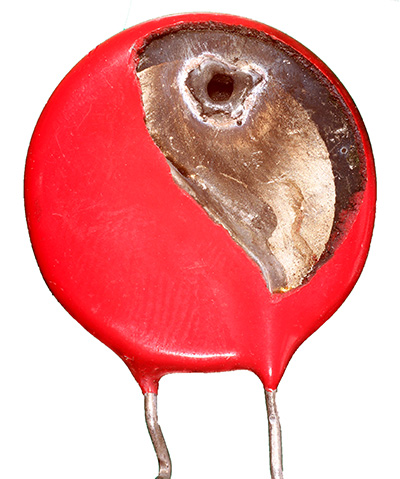EMC Question of the Week: April 26, 2021

When the terminal voltage exceeds a pre-defined maximum level, voltage-limiting transient protection devices hold the voltage to that maximum. On the other hand, "crowbar" devices act like a switch and pull the voltage to near zero. A significant advantage of "crowbar devices is that they generally,
- respond faster
- can handle higher-energy transients
- are smaller and cost less
- are non-polarized
Answer
The best answer is “b.” Since either the terminal voltage or the terminal current is always nominally zero, crowbar devices are not required to dissipate most of the transient energy. Voltage-limiting devices have both a terminal voltage and a terminal current while they are suppressing a transient causing power to be dissipated in the device. For this reason, crowbar devices such as thyristors and gas-discharge tubes can generally deal with much higher-energy transients.
Voltage-limiting devices such as diodes and varistors tend to respond much faster. They are also typically smaller and cost less. Varistors and gas-discharge tubes are inherently non-polarized. Transient protection made with diodes and thyristors can be polarized or non-polarized depending on how the devices are configured.
The image on the right is a varistor that was damaged by a high-energy transient.
Have a comment or question regarding this solution? We'd like to hear from you. Email us at
